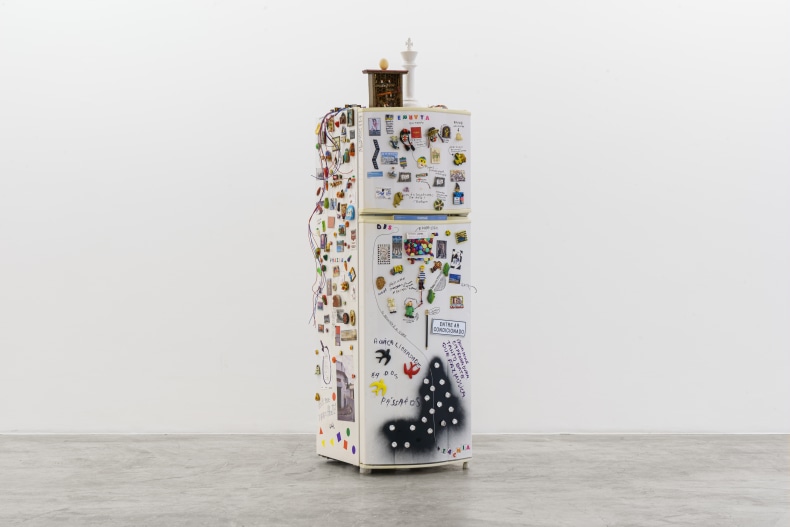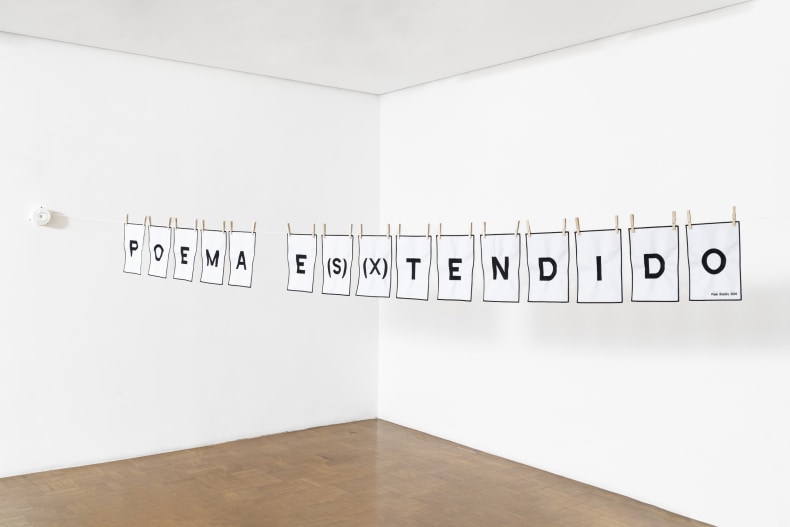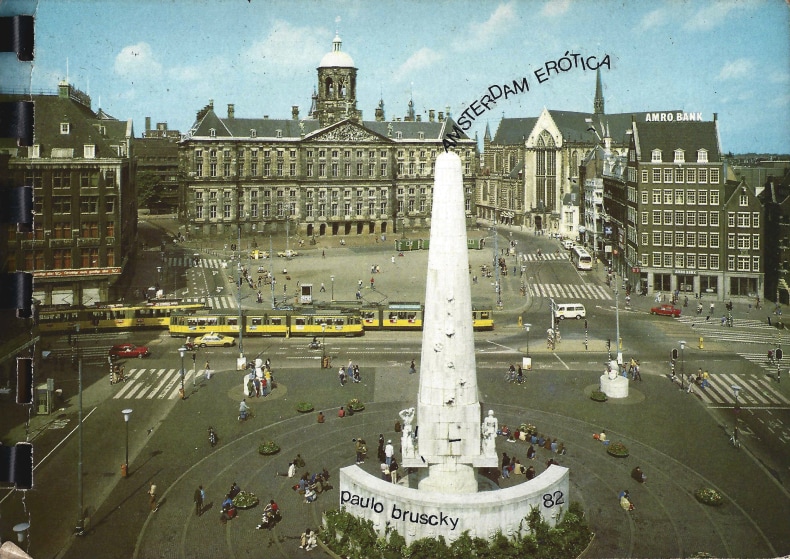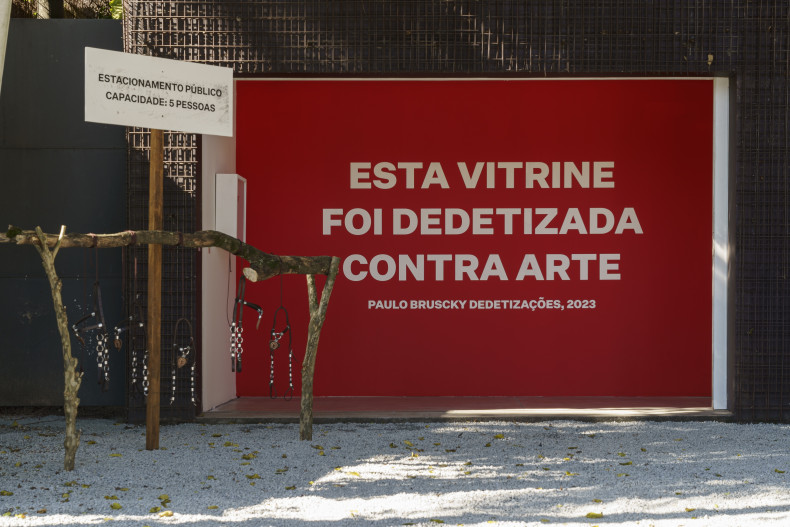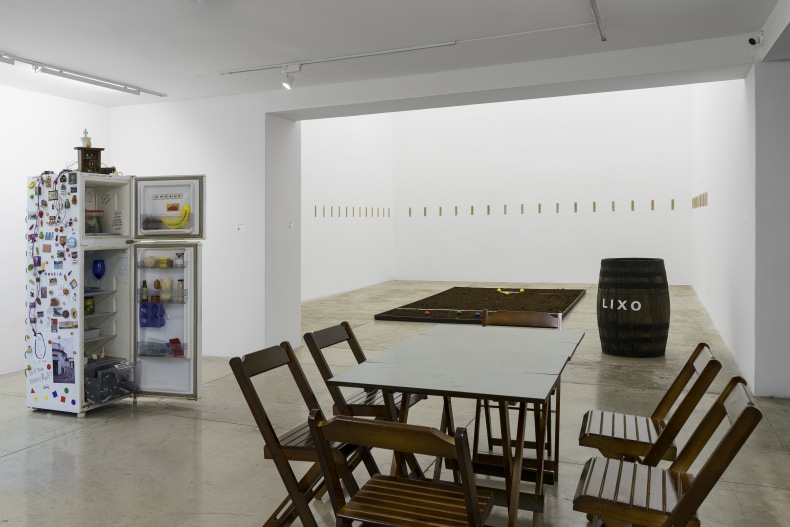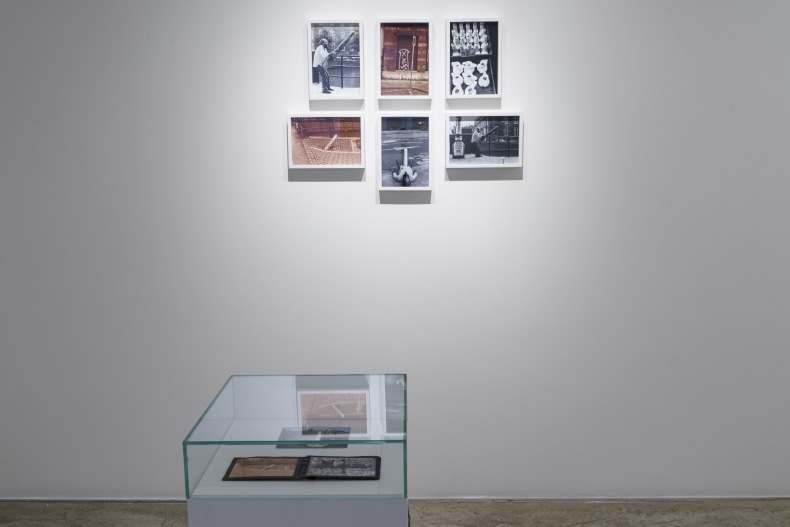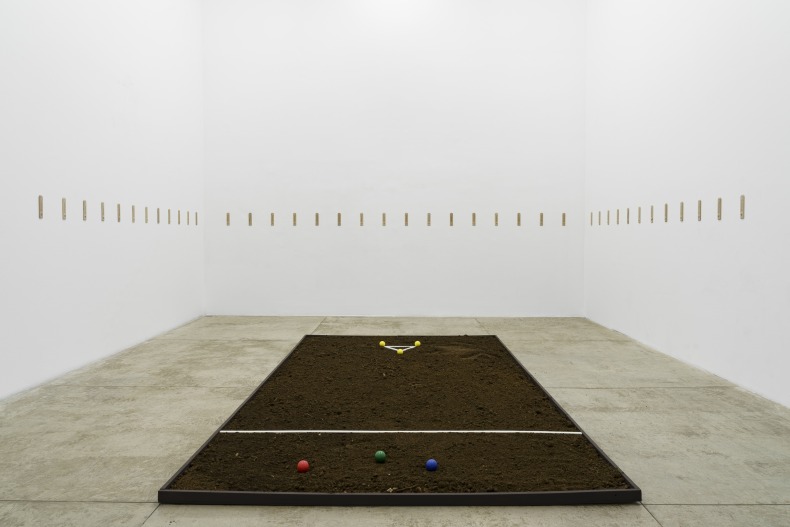Nara Roesler São Paulo is pleased to present Banco de ideias, Paulo Bruscky’s fourth solo exhibition at Nara Roesler São Paulo, which will be curated by Jacopo Crivelli Visconti and opens to the public on May 27. The show takes place alongside Atitude Política, a solo show by the artist, also curated by Visconti, which opens on June 3 at Instituto de Arte Contemporânea - IAC, in São Paulo.
Index of Ideas brings together a selection of works taken from what the artist calls his "Index of ideas," which consists of a series of notebooks produced since the 1970s and continuously updated as Bruscky inserts thoughts, notes, and countless projects for works, many of which remain on paper. On the occasion of the exhibition, a selection of the artist’s projects have been produced for the first time, bringing together . works from Banco de Ideias and other pieces by Bruscky that have the idea of the artist's reinterpretation of found objects and urban structures as their common axis.
The exhibition at the Instituto de Arte Contemporânea - IAC (Contemporary Art Insitute) presents a selection from Paulo Bruscky’s archives, consisting of a collection of thousands of items created over five decades of research, including works, publications, documents, and correspondence from approximately 1000 artists from 52 countries, including the most important vanguards of the 20th century, such as that of futurism, Dadaism, pop art, Cobra, Gutai, and Fluxus groups, conceptual art, video art, mail art, audio art, and experimental poetry.
In Visconti's words: "Paulo Bruscky's first exhibition at the Instituto de Arte Contemporânea - IAC was conceived from research in his endless personal archive, this kind of Borgia "Library of Babel" in Recife, where letters, works, poems, ideas from Bruscky himself and an incalculable number of other artists coexist and converse, in a manner analogous to what happens, in a certain way, at the IAC itself. (...) The axis chosen, in dialogue with the artist, was the artist's collaboration, support, and affinity with colleagues around the world who faced, as he did, the threats and dangers of oppressive regimes.”
A multimedia artist, poet, and pioneer of "art-communication," Bruscky emerged on the Brazilian art scene during the Military Dictatorship, a time when political freedoms and freedom of expression were under heavy repression. In a context that made it difficult to create more conventional works, given the persecution of censorship, many artists began to use alternative languages and supports, such as videos, performances, postcards and happenings, thus creating a very important conceptual scene in the country, of which Paulo Bruscky was one of the main exponents. His artistic practice, based on the idea of art as information, is marked by constant experimentalism, resulting in a plural body of work, composed of visual poetry, artist's books, performances, urban interventions, Super-8 films, and works in new media.
Through these parallel projects, Visconti manages to address two fields of enormous importance in Bruscky's trajectory: social and political contestation - the result of his critical and militant stance, partly conceived in opposition to the rise of military governments and harsh dictatorial regimes in several Latin American countries, including Brazil - and humor and irony as poetic resources.
Bruscky has participated in several exhibitions in Brazil and abroad, including numerous biennials, such as the 16th, 20th, 26th, and 29th editions of the Bienal de São Paulo, Brazil (1981, 1989, 2004, and 2010), 57th Venice Biennale, Italy (2017); and the 10th Biennale of La Habana, Cuba (2009), among others. Recent solo exhibitions include: Paulo Bruscky. Eteceterate, at Fundación Luis Seoane (2018), n'A Coruña, Spain; Xeroperformance, at the Americas Society / Council of the Americas (AS/COA) (2017), in New York, United States; Paulo Bruscky: Artist Books and Films, 1970-2013, at The Mistake Room (2015), in Los Angeles, United States; and at Another Space (2015), in New York, United States; Paulo Bruscky, at the Museum of Modern Art of São Paulo (MAM-SP) (2014), in São Paulo, Brazil; Paulo Bruscky: Art is our Last Hope, at the Bronx Museum (2013), in New York, United States; Ars brevis, at the Museum of Contemporary Art of the University of São Paulo (MAC USP) (2007), in São Paulo, Brazil.
His work is part of important collections such as: Solomon R. Guggenheim Museum, New York, USA; The Museum of Modern Art (MoMA), New York, USA; Museu d'Art Contemporani de Barcelona, Barcelona, Spain; Museu de Arte Moderna de São Paulo (MAM-SP), São Paulo, Brazil; Museu de Arte Contemporânea da Universidade de São Paulo (MAC-USP), São Paulo, Brazil; Pinacoteca do Estado de São Paulo, São Paulo, Brazil; Stedelijk Museum, Amsterdam, Netherlands; Tate Gallery, London, UK, among others.
